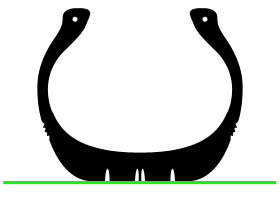Having the proper tire pressure is a crucial safety issue. Next to the brakes, tires are the most important safety devices on your car. Incorrect tire pressure will compromise handling, braking and stability. And in the worst-case scenario, improper tire pressure can lead to tire failure — and a serious accident. Incorrect tire pressure also will affect your comfort, fuel economy and the life of your car’s tire.
What happens if the Tire pressure is incorrect?
If tire pressure is too high, then less of the tire touches the ground. As a consequence, your car will bounce around on the road. And when your tires are bouncing instead of firmly planted on the road, traction suffers and so do your stopping distances. You’ll also feel a decrease in ride comfort.
If tire pressure is too low, then too much of the tire’s surface area touches the ground, which increases friction between the road and the tire. As a result, not only will your tires wear prematurely, but they also could overheat. Overheating can lead to tread separation and perhaps lead to a serious accident.
Tire pressure should be checked often, because pressure changes with the outside temperature. Tire pressure decreases by about 1 pound per square inch for every 10-degree drop in outside air temperature.
Related: Energy Saving Tires Improves Fuel Efficiency
Tire Pressure Calculations:
Tire pressure is measured by calculating the amount of air that has been pumped into the inner lining of your tire either in pounds per square inch (PSI) or BAR pressure.
The manufacturer of your vehicle will specify the suitable pressure for your tires, and it is your responsibility as the driver to make sure that the pressure is checked and corrected on a regular basis.
Correct Tire pressures
You can find the recommended tire pressure for your vehicle in your vehicle handbook or printed either in the sill of the driver’s door or on the inside of the fuel tank flap. Your vehicle manufacturer may suggest different tire pressures for your front and rear tires so make sure you aware of these guidelines.
Related: Colored Car Tires From China
Tire Pressure Measurement Converter
Convert a bar pressure measurement into a psi pressure measurement and vice versa using the tire pressure converter below:
| BAR | PSI | BAR | PSI | BAR | PSI | BAR | PSI | BAR | PSI |
| 1.30 bar | 17 psi | 1.90 bar | 27 psi | 2.60 bar | 37 psi | 3.25 bar | 47 psi | 3.95 bar | 57 psi |
| 1.35 bar | 18 psi | 1.95 bar | 28 psi | 2.65 bar | 38 psi | 3.30 bar | 48 psi | 4.00 bar | 58 psi |
| 1.40 bar | 19 psi | 2.00 bar | 29 psi | 2.70 bar | 39 psi | 3.40 bar | 49 psi | 4.10 bar | 59 psi |
| 1.45 bar | 20 psi | 2.10 bar | 30 psi | 2.75 bar | 40 psi | 3.50 bar | 50 psi | 4.15 bar | 60 psi |
| 1.50 bar | 21 psi | 2.15 bar | 31 psi | 2.80 bar | 41 psi | 3.55 bar | 51 psi | 4.50 bar | 65 psi |
| 1.55 bar | 22 psi | 2.20 bar | 32 psi | 2.90 bar | 42 psi | 3.60 bar | 52 psi | 4.80 bar | 70 psi |
| 1.60 bar | 23 psi | 2.25 bar | 33 psi | 3.00 bar | 43 psi | 3.70 bar | 53 psi | 5.20 bar | 75 psi |
| 1.70 bar | 24 psi | 2.30 bar | 34 psi | 3.05 bar | 44 psi | 3.75 bar | 54 psi | 5.50 bar | 80 psi |
| 1.75 bar | 25 psi | 2.40 bar | 35 psi | 3.10 bar | 45 psi | 3.80 bar | 55 psi | 5.85 bar | 85 psi |
| 1.80 bar | 26 psi | 2.50 bar | 36 psi | 3.20 bar | 46 psi | 3.90 bar | 56 psi | 6.20 bar | 90 psi |
Always check the pressure with a tire pressure gauge when your tires are cold. Finally, if you are using your vehicle to carry additional load or weight, always consult your vehicle handbook for the correct loaded tire pressure.

A computer animation professional with over 23 years of industry experience having served in leading organizations, TV channels & production facilities in Pakistan. An avid car enthusiast and petrolhead with an affection to deliver quality content to help shape opinions. Formerly written for PakWheels as well as major publications including Dawn. Founder of CarSpiritPK.com







